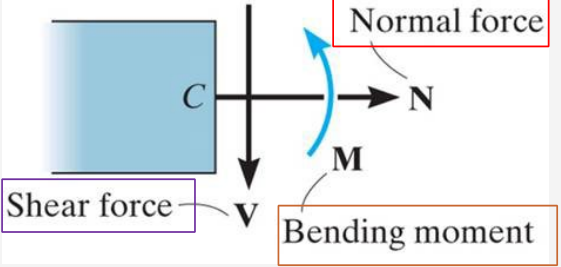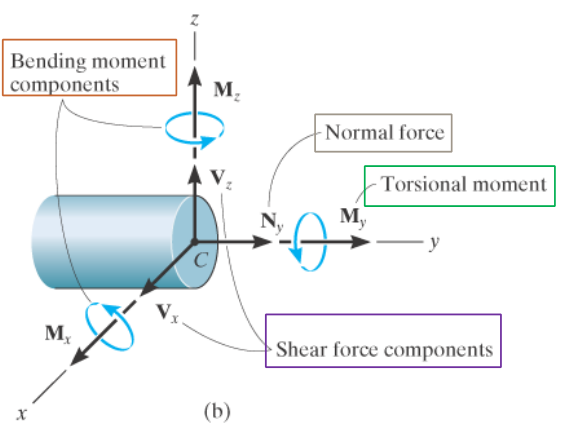Beams are structural members designed to support loads applied perpendicular to their axes.
Method of Sections
The method of sections is used to find forces acting within a member to make sure a member can resist the loads applied to it. Typical internal loads include:
- Normal force , acting perpendicular to the cut cross section
- Shear force , acting tangent to the cross section
- Bending moment , preventing relative rotation between sections

To determine internal force values, apply the equations of equilibrium in the case that the beam is static.
In terms of structure for a problem:
- Determine support reactions
- Cut the beam at the point to examine
- Draw FBD of one of the halves, including internal forces acting at the point
- Solve for unknowns using equations of equilibrium
For sign convention,
- is positive if it creates tension
- is positive if it causes the beam to rotate clockwise
- is positive if the beam bends upwards in a concave manner
3D
Internal forces in 3D:
- Normal force acts perpendicular to cross section
- Shear force acts tangent to cut cross section
- Bending moment components prevent relative rotation between the two segments
- Torsional moment is the twisting moment

- Determine support reactions of entire beam, if needed
- Take an imaginary cut at the place where you need to determine the internal forces
- Draw the FBD of each section including the internal forces (N, V, M) at the cut cross section using the established sign convention
- Select the resulting section or piece that will be easier to analyze
- Apply the Equations of Equilibrium
- •Moments should be summed at the cut section to eliminate the N and V
- If the solution yields a negative scalar, the sense is opposite to that drawn on the FBD